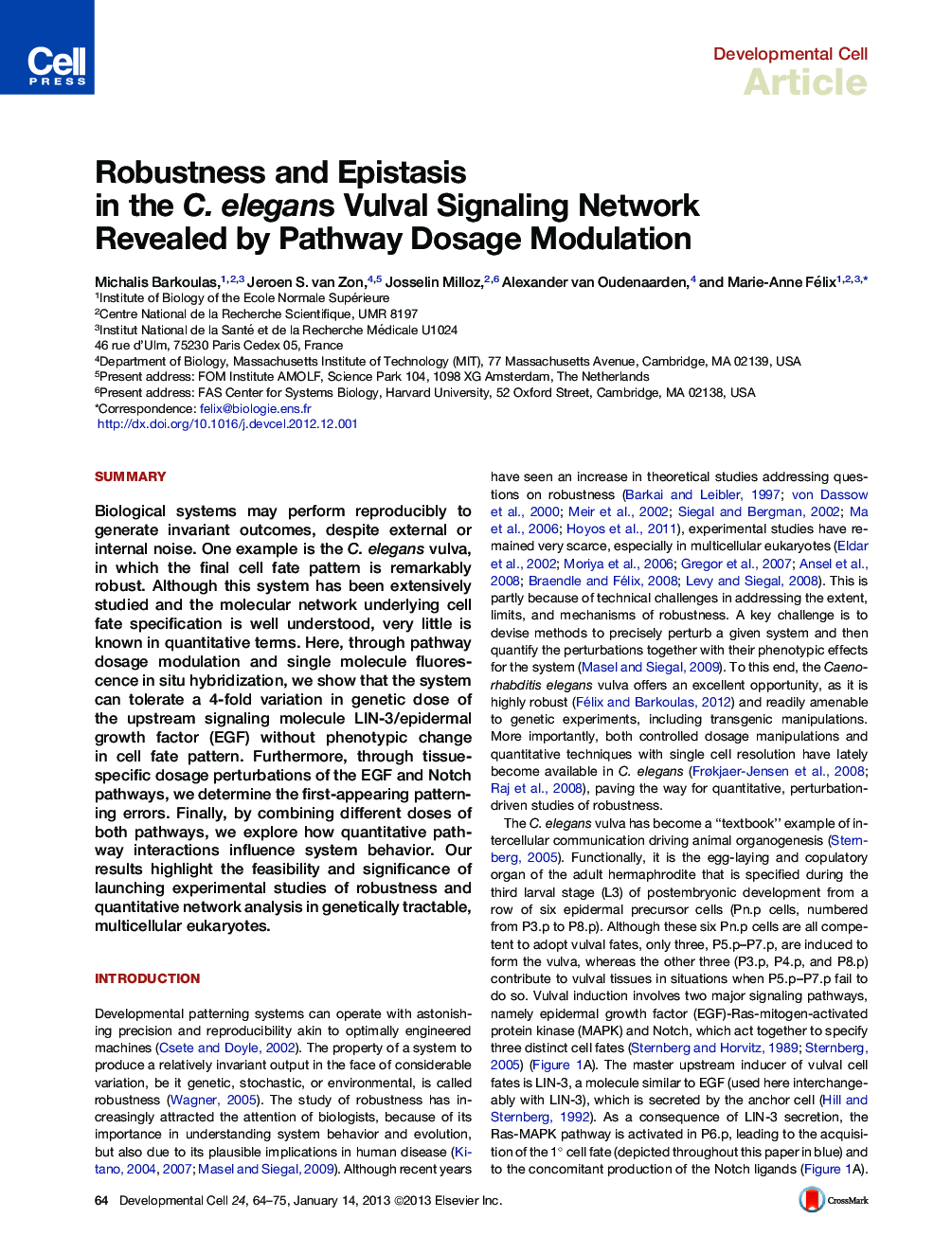| Article ID | Journal | Published Year | Pages | File Type |
|---|---|---|---|---|
| 2176899 | Developmental Cell | 2013 | 12 Pages |
SummaryBiological systems may perform reproducibly to generate invariant outcomes, despite external or internal noise. One example is the C. elegans vulva, in which the final cell fate pattern is remarkably robust. Although this system has been extensively studied and the molecular network underlying cell fate specification is well understood, very little is known in quantitative terms. Here, through pathway dosage modulation and single molecule fluorescence in situ hybridization, we show that the system can tolerate a 4-fold variation in genetic dose of the upstream signaling molecule LIN-3/epidermal growth factor (EGF) without phenotypic change in cell fate pattern. Furthermore, through tissue-specific dosage perturbations of the EGF and Notch pathways, we determine the first-appearing patterning errors. Finally, by combining different doses of both pathways, we explore how quantitative pathway interactions influence system behavior. Our results highlight the feasibility and significance of launching experimental studies of robustness and quantitative network analysis in genetically tractable, multicellular eukaryotes.
Graphical AbstractFigure optionsDownload full-size imageDownload high-quality image (274 K)Download as PowerPoint slideHighlights► A phase map of cell fate patterns is built as a function of signaling pathway dose ► The vulva system can buffer a 4-fold variation in mean lin-3/egf mRNA number ► The major role of LIN-12/Notch in the vulva is to promote the 2° fate ► Inhibition of 1° fate by LIN-12 is important when lin-3 dose is mildly increased
